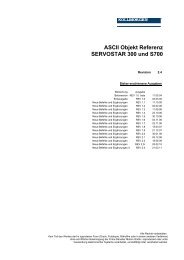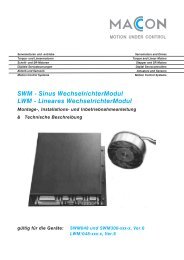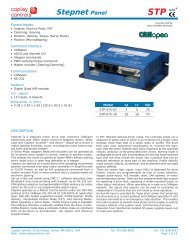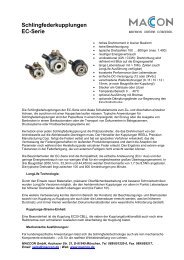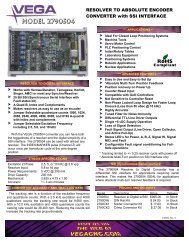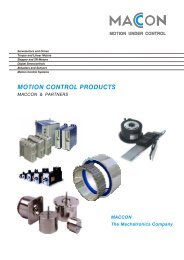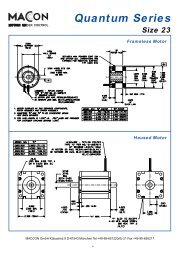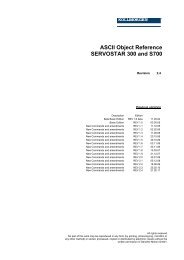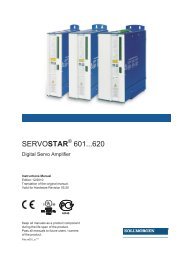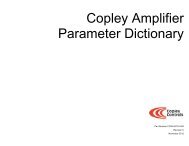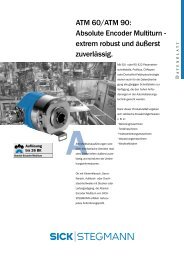CANopen Programmer's Manual - Maccon.de
CANopen Programmer's Manual - Maccon.de
CANopen Programmer's Manual - Maccon.de
Create successful ePaper yourself
Turn your PDF publications into a flip-book with our unique Google optimized e-Paper software.
5: Stepper Mo<strong>de</strong> Support <strong>CANopen</strong> Programmer’s <strong>Manual</strong><br />
Current Control in Microstepping Mo<strong>de</strong><br />
Servo systems use their servo loops to <strong>de</strong>termine how much current (and in which direction) to<br />
apply to the motor. For a stepper motor, the amount of current is typically a constant value<br />
programmed by the user.<br />
In addition, Copley Controls amplifiers use different current values for different states of motor<br />
activity. During constant speed moves, the Run Current is applied.<br />
During the acceleration / <strong>de</strong>celeration portion of the move, the Boost Current is used. After a move<br />
completes (the velocity reaches zero) the amplifier continues to apply the Run Current to the<br />
motor for the amount of time programmed in the Run to Hold Time object. Once that timeout has<br />
expired, the Hold Current is applied.<br />
While Boost Current is applied to the motor, an I 2 T limit is used to protect the motor from<br />
overheating. If the move remains in the acceleration phase for longer than the boost current time,<br />
then the current applied to the motor falls back to the run current. This allows the system to set the<br />
Run Current value equal to the motor’s continuous current limit, and set the Boost Current to a<br />
value larger then the motor’s continuous limit.<br />
Once the move has finished and the holding current has been applied to the motor, an optional<br />
voltage control mo<strong>de</strong> of operation can be entered. In this mo<strong>de</strong> of operation, the motor is held in<br />
position with extremely low jitter at the expense of a slightly looser control of the current in the<br />
motor's windings. The Voltage Control Mo<strong>de</strong> Time Delay object can be programmed to control the<br />
<strong>de</strong>lay between entering hold current mo<strong>de</strong> and entering the voltage control mo<strong>de</strong>.<br />
If the Voltage Control Mo<strong>de</strong> Time Delay is set to zero, the voltage control mo<strong>de</strong> is disabled.<br />
160 Copley Controls




